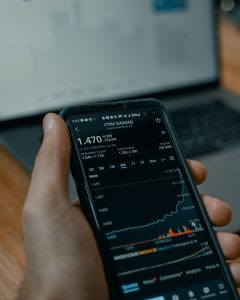Forex trading is a lucrative opportunity for many individuals looking to make money from the comfort of their own homes. However, it is also a high-risk market where prices can fluctuate rapidly, leading to potential losses. To mitigate these risks, traders often rely on forex volatility indicators. In this beginner’s guide, we will explore what forex volatility indicators are, how they work, and how traders can use them to avoid unnecessary risks.
Forex volatility indicators are tools used by traders to measure the degree of price fluctuations in the forex market. These indicators provide valuable insights into market conditions, helping traders make informed decisions regarding their trades. By understanding the level of volatility, traders can adjust their strategies accordingly, minimizing potential risks.
One popular forex volatility indicator is the Average True Range (ATR). Developed by J. Welles Wilder Jr., the ATR measures the average range between the highest and lowest prices over a specified period. It essentially quantifies the level of volatility in the market. A higher ATR value indicates higher volatility, whereas a lower ATR value suggests lower volatility.
The ATR can be used in multiple ways to avoid risk in forex trading. Firstly, it can help traders determine their position sizing. By considering the ATR, traders can adjust their trade sizes to account for the volatility of a particular currency pair. For example, if a currency pair has a high ATR, traders may decide to reduce their position sizes to avoid potential losses.
Secondly, the ATR can be used to set stop-loss levels. Stop-loss orders are an essential risk management tool that allows traders to limit their potential losses. By setting stop-loss levels based on the ATR, traders can ensure that their orders are placed outside the normal price fluctuations. This approach provides a safety net, protecting traders from sudden and unexpected market movements.
Another useful forex volatility indicator is the Bollinger Bands. The Bollinger Bands consist of a simple moving average (SMA) and two standard deviation lines, plotted above and below the SMA. The width between the upper and lower bands represents the volatility of the market. When the bands widen, it indicates higher volatility, and when they narrow, it suggests lower volatility.
Traders can use the Bollinger Bands to identify potential trading opportunities while avoiding excessive risks. For instance, when the bands narrow, it indicates a period of low volatility, often followed by a sharp increase in price movements. Traders can plan their trades accordingly, waiting for the bands to expand before entering a position. This approach helps traders avoid entering the market during periods of low volatility, reducing the chances of being caught in false breakouts or whipsaws.
In addition to the ATR and Bollinger Bands, there are several other forex volatility indicators that traders can explore, such as the Volatility Index (VIX), the Chaikin Volatility Indicator, and the Average Directional Index (ADX). Each indicator provides unique insights into market conditions, helping traders make well-informed decisions.
While forex volatility indicators are powerful tools for risk management, it is essential to remember that they are not foolproof. Market conditions can change rapidly, and unexpected events can lead to increased volatility. Traders should always stay updated with economic news, geopolitical events, and other factors that can impact the forex market.
Furthermore, it is crucial for beginners to thoroughly understand how each volatility indicator works before incorporating them into their trading strategies. Practice and experimentation are key to finding the right combination of indicators that suit individual trading styles and risk tolerance levels.
In conclusion, forex volatility indicators are valuable tools for traders looking to avoid unnecessary risks in the market. By analyzing the level of volatility, traders can adjust their positions, set appropriate stop-loss levels, and make informed trading decisions. However, it is important to remember that no indicator can predict market movements with 100% accuracy. Traders should always approach forex trading with caution and continuously educate themselves to develop effective risk management strategies.


